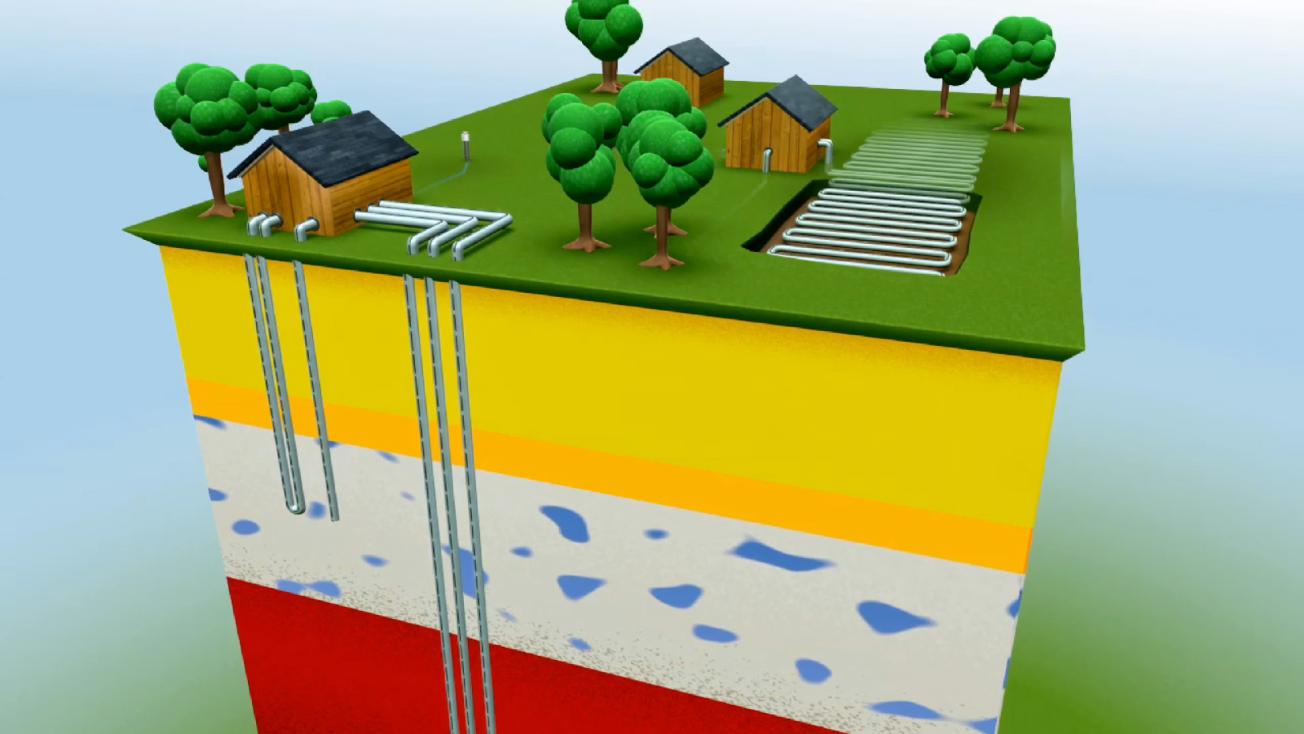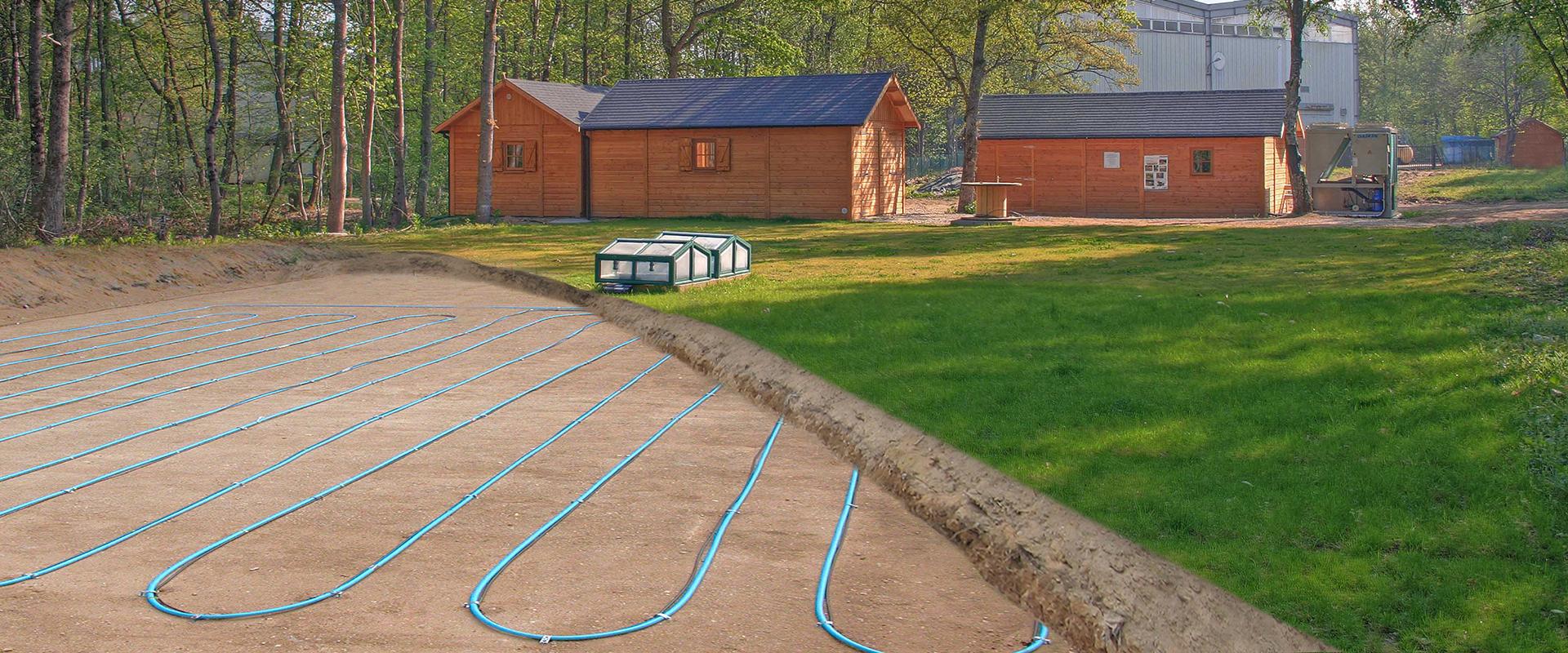
Different types of below-ground heat exchangers for geothermal heat pumps at the BRGM's experimental geothermal energy platform (Orléans, Loiret, 2009).
© BRGM
The Haut-Commissariat au Plan is a government body responsible for strategic planning. Its mission is to inform the decisions made by public authorities. In its 12th preliminary document published on 11 October 2022, the Haut-Commissariat au Plan draws attention to the importance of near-surface geothermal energy, a renewable, low-carbon energy source derived from the heat within the earth. How can near-surface geothermal energy revolutionise the daily lives of French people ? By enabling increased savings, greater independence and greener energy.
A strategic plan to develop the near-surface geothermal energy sector in France
The Haut-Commissariat au Plan considers it both feasible and necessary to launch an ambitious action plan to develop near-surface geothermal energy. This programme could contribute significantly to France's goals in terms of:
- strategic and energy sovereignty,
- achieving carbon neutrality and moving away from fossil fuels.
BRGM helped develop this four-pronged plan to promote the effective deployment of this renewable energy source throughout mainland France, in individual housing, collective housing and the services sector. Large-scale development of near-surface geothermal energy between now and 2050 The action plan includes proposals to:
- Develop the training of professionals in the sector to strengthen the skills base and increase the supply-side volume, in about 7 years, at a cost of 60 million euros.
- Develop drilling capacity and the supply of heating systems, currently insufficient to meet higher demand. Ramp up in 7 years, on the basis of an approach to be worked out with players in the sector and the manufacturers concerned.
- Reduce the initial investment and financial risks for private and commercial customers. This is a coordinated incentive scheme involving the government, regional authorities and funding agencies.
- Make a more precise map of France in order to encourage the development of near-surface geothermal energy, particularly by identifying the most favourable areas for efficient drilling.
What do we mean by near-surface geothermal energy?
Near-surface geothermal energy uses the energy present in the subsurface at depths ranging from a few metres to 200 metres. At these depths, the ground temperature is relatively constant all year round, varying between 10 and 20°C. A geothermal heat pump is used to provide hot, cold or cool air at the required temperature.
Near-surface geothermal energy is suitable for all types of buildings (new, old, residential, offices, industrial or agricultural) of all sizes (from individual houses to large office blocks). Its potential is considerable. Today, near-surface geothermal energy accounts for just 3% of the renewable heat used in mainland France, i.e., just over 1% of total national heat production
Near-surface geothermal energy is free, sustainable, easy to implement and emits no greenhouse gases.
BRGM is promoting the development of near-surface geothermal energy for the energy transition
BRGM, the French geological survey, has, for several decades, been developing solutions to exploit the potential of the subsurface as an energy resource.
Through its work in favour of the energy transition, it is aiming in particular to promote the development of different types of geothermal energy in order to produce low-carbon heating, cooling and electricity.
The Haut-Commissariat au Plan advises the government on strategic decisions
The Haut-Commissariat au Plan is responsible for leading and coordinating strategic planning and studies on behalf of the government, and for informing the choices made by the public authorities with regard to demographic, economic, social, environmental, health, technological and cultural issues.
In order to clarify the issues and raise awareness of these topics as a way to encourage public debate, it publishes brief, informative, preparatory documents.







